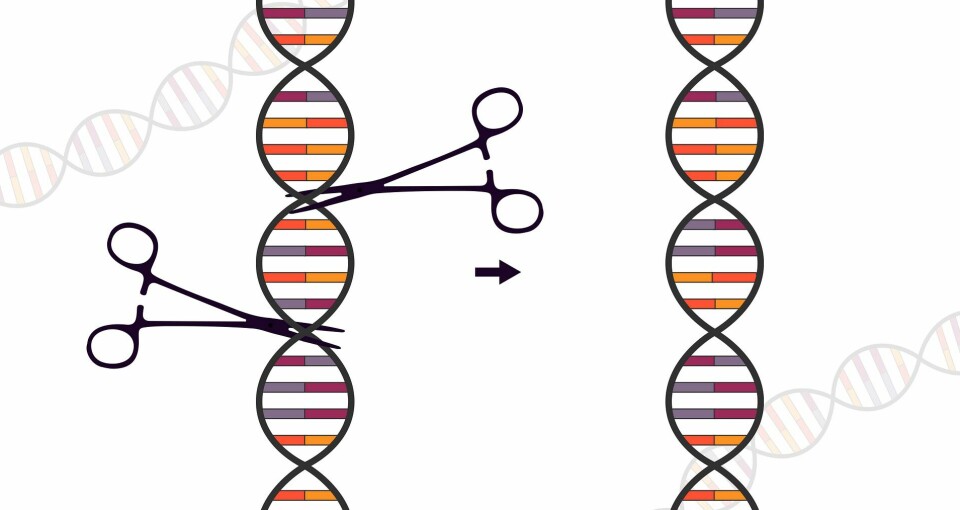
Grieg Seafood voices support for gene editing
The advantages for society are clearly greater than the disadvantages, says salmon farmer
Norwegian salmon farmer Grieg Seafood has given its support to the use of the potential use of gene editing to solve some of the sector’s challenges, reports Fish Farming Expert's Norwegian sister site, Kyst.no.
Grieg, which farms in Norway and Canada, set out in its position in a consultation response to Norway’s Genetic Technology Committee, which is carrying out a broad professional review of questions related to the production and use of genetically modified organisms.
In its response, Grieg Seafood writes, among other things, that it believes innovations in biotechnology can potentially play a major role in the industry's improvement work.
“We see many ways of application that open up if new technology can be used. We believe that precision breeding (PB) in particular can potentially be a very important solution to a number of challenges in aquaculture,” writes Grieg. Precision breeding is a way of changing the DNA of plants or animals in a precise way, using techniques including gene-editing.
Can solve challenges
Grieg points out that it supports the majority of proposed changes relating to the regulation of organisms developed with new genome techniques (NGT), which include targeted genetic changes within the species or with a crossable species.
“For aquaculture, we believe that NGT, of which CRISPR technology is an example, can help solve a number of challenges,” says the company, which harvested 71,200 gutted weight tonnes of salmon in Norway and Canada last year.
It highlights several positive ways to use the biotechnology being discussed:
- Develop salmon individuals with increased disease resistance and better production characteristics, which would significantly improve fish health and welfare.
- Develop salmon individuals that are more resistant to salmon lice, as the Pacific salmon is. It would be very positive both for the health of farmed salmon and reduced impact on wild salmon. There is already talk about which research environment will first make use of mapped genes for immunological resistance to salmon lice in Pacific salmon. This information can be used to “turn on” Atlantic salmon’s genes to mimic the resilience of Pacific salmon using PB.
- Develop sterile salmon that cannot be genetically mixed with wild salmon, which we are working towards in the above-mentioned research project.
- We also see potential for the application of NGT and PB to develop sustainable feed ingredients that meet the nutritional needs of the fish in a good and sustainable way.
- We also believe that there is a clear application potential for PB organisms in the production of products that are included as input factors in the production of salmon, here we can mention medicines, vaccines, additives, and feed raw materials originating in PB organisms.
- Aquaculture is vulnerable to climate change in the sea, and we have identified negative changes in the environment as a climate risk. With PB, one can potentially adapt the salmon’s genes to the changed environmental conditions if these occur.
Grieg Seafood believes that the above examples offer multiple wins where the environment, wild salmon, farmed fish, society and the aquaculture companies benefit from the changes proposed by the majority of the committee.
“The advantages for society of adopting this are clearly greater than the disadvantages, in our view, if it is done in a responsible way,” writes the company.
Fears reputational risk
The company is nevertheless aware that it is high risk and unattractive for it to use genetically edited animals or products if these are to be regulated as genetically modified organisms. Market access and labelling of salmon products based on PB methodology is therefore a topic Grieg wishes to be further addressed.
“The majority of Norwegian-produced salmon is exported, and labelling of the product is important for perception and access to different segments of the market. It is desirable to have the possibility of neutral labelling of products based on PB, or that the products can be included in so-called positive labelling or standards. This is because salmon produced with one or more PB steps in the value chain will potentially be produced with less environmental impact, better fish health and fish welfare, as well as with a lower carbon footprint,” the company writes.
Grieg Seafood also points out that if the Norwegian aquaculture industry has to operate under “rigid regulation” in the future, there is a risk that foreign environments will gain a competitive advantage over Norwegian aquaculture by succeeding in solving the important challenges the company mentions through effective new, targeted breeding methods as PB.





















































